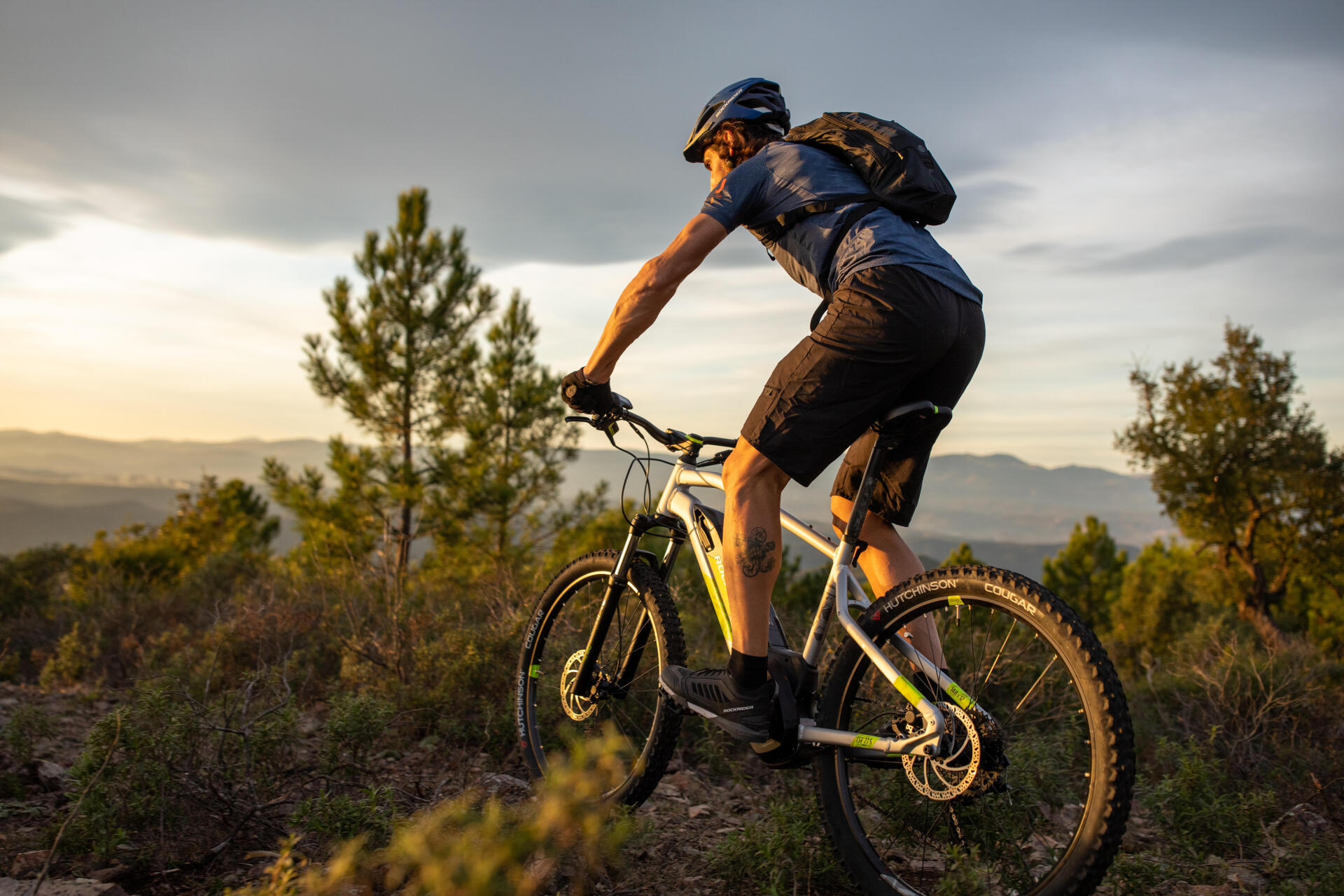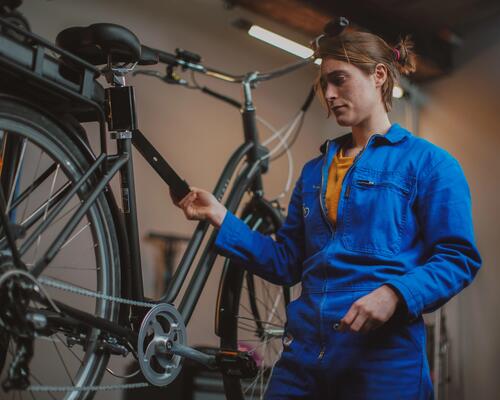- Do e-bikes tend to get stolen?
E-bikes are certainly more expensive than traditional bikes, but because they have a battery, you need a key to start them. This makes it harder for thieves to steal them, plus your bike will be much harder to sell on without the key!
You also have the option of insuring your bike, either with your usual insurer or with the policy that Decathlon offers when you buy your bike.
In France, it has been compulsory to mark bikes since the start of 2021. A label is stuck onto the frame and the bike is registered in a national database when you buy it, with a unique ID number matched to your details. The database, called the FNUCI, can be consulted by the public and used to mark the bike as "for sale", "stolen, lost" or "no longer in use". The police, lost-and-found companies and impounding companies have access to this data.
There are 6 government-approved identification operators, and Decathlon is one of them. There are different methods for marking bikes, but at Decathlon we use a permanent label that usually costs €10 but is free when you buy a bike from Decathlon.






![WEB_dsk,mob,tab_sadvi_int_TCI_2018_URBAN CYCLING[8379382]tips city e-bike almost effortless](https://contents.mediadecathlon.com/p1265190/k$c4102bbf4d0efb97cd3d58f5847e99f2/500x0/3360pt2240/5600xcr4480/default.jpg?format=auto)


